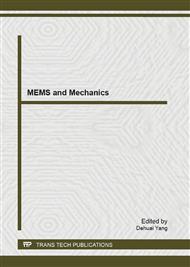p.504
p.509
p.516
p.523
p.528
p.534
p.540
p.546
p.553
Research on Control of Heat Flux Environment Simulation for High-Speed Aircraft
Abstract:
The characteristics of the transient heating control process of aerodynamic simulation experiments are complicated, transient, highly nonlinear, and strongly coupled, which make it difficult or impossible to develop a mathematical model. By using the fuzzy control method, many good qualities (such as robustness, high adaptability to changing parameters, and a short transition process time) can be obtained. Based on the fuzzy control method, a transient aerodynamic heating simulation control system for missiles was established. It was demonstrated that quick dynamic control of the aerodynamic simulation heating process according to the transient and continual change in heat flow on the surface of high-speed aircrafts can be completed by using this control system.
Info:
Periodical:
Pages:
528-533
Citation:
Online since:
June 2013
Authors:
Keywords:
Price:
Сopyright:
© 2013 Trans Tech Publications Ltd. All Rights Reserved
Share:
Citation:


